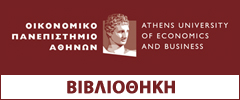| Abstract : | This study examines one of the first models of the endogenous growth literature, a model of endogenous technological growth introduced by Romer in 1990. The model is presented and algebraically solved. The solution of the model is interpreted, intuitively explained, and critically evaluated based on empirical findings. Romer’s 1990 model uses technological or knowledge spillovers as the engine that drives growth. Knowledge, thought of as blueprints for durables, is considered a non-rival partially excludable good. The partial excludability of knowledge, which is used as an input in the production function of the final good, is accomplished through a legal structure of infinitely lived patents. The existence of patents, and thus monopolies, implies a deviation from the classical perfect competition framework. A research sector is responsible for the provision of new knowledge to the economy. The externality effect of new knowledge renders research continuously more effective. It is this externality effect that supports perpetual growth. The model is solved for a balanced growth path, which is proven to exist and to be compatible with the static equilibrium conditions. The solution is then shown not to be Pareto optimal, and the Pareto optimal balanced growth path is calculated.
|
|---|







 Copyright © 2013 Library AUEB. All rights reserved.
Copyright © 2013 Library AUEB. All rights reserved.